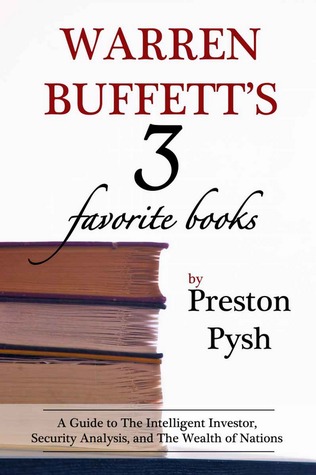More on this book
Community
Kindle Notes & Highlights
This was calcuated by taking the call price ($110) plus the 2 dividend payments ($9 each for a total of $18).
let’s assume 1,000 preferred shares were issued. As a result, the total book value of preferred stock would be $128,000.
Common Stockholders’ Equity = $1,000,000 - $128,000 Common Stockholders’ Equity = $872,000
a common shareholder, it’s important to understand how and why it’s being done.
Preferred shares are a great opportunity for investors to make investments that are less risky than common shares and better returns than bonds.
As you might expect, the trading price of preferred shares really doesn’t change very much.
Chapter 9 Saving your Money and Cash Flow
According to a 2009 Sports Illustrated article, 78% of National Football League players are either bankrupt or in financial trouble within 2 years of retirement. An estimated 60% of National Basketball Association players are completely bankrupt within 5 years of their retirement.
For many people, they have the mindset that their next promotion or higher-paying salary will whisk away all their problems. Ironically, when these same people get a raise and make an additional $5,000 a year, they buy a new vehicle that raises their annual payments to $6,000 a year!
The problem most people have is the discipline to live within their means and stay there.
For the poor professional athletes, they lived the high life and never did anything to turn their limited savings and massive cash flow into assets ...
This highlight has been truncated due to consecutive passage length restrictions.
Increasing your cash flow every month is a key pillar to investing like Warren Buffett.
One of the things Warren Buffett is most famous for is being frugal with his money.
If the stock market is overvalued, use your cash flow to purchase high-yielding bonds. If the market just crashed and stocks are selling cheap, use your cash flow to purchase the undervalued stocks.
Increasing your standard of living through the use of debt is a mirage that leads you down a long dry path. In the long run, you’ll be thirstier than when you started.
The Cash Flow Statement
If you haven’t noticed yet, companies pretty much do the same thing as people. The only reason most people don’t understand corporate accounting is because they’ve never been taught and/or never found it useful.
Since the income statement (used to find the EPS) is prepared under the accrual basis of accounting, the revenues reported may not have been actually collected. Similarly, the expenses listed in the income statement may not have been paid either.
Back when Benjamin Graham wrote Security Analysis and The Intelligent Investor, cash flow statements weren’t reporting requirements. Now they are.
Operating Activities:
Investing Activities:
Financing Act...
This highlight has been truncated due to consecutive passage length restrictions.
Below is a generic cash flow statement for stock YOU: Net income from job $70,000 Net income from dividends $500 Net income from coupons $100 Cash from Operating Activities $70,600 Investment in stocks $-12,000 Investment in bonds $- 4,000 Cash from Investing Activities $-16,000 Retirement of car debt $-6,000 Retirement of ...
This highlight has been truncated due to consecutive passage length restrictions.
If the cash flow statement had a positive sign for both of these activities, that would mean investments were sold and debt was incurred, respectively.
A company that has a solid cash flow statement is a company that can make moves on markets that are undervalued. Most importantly, a company that has a growing cash flow statement is a company that’ll continue to grow its equity and dividends.
Chapter 10 When Do I Sell?
Hopefully never! That’s if you’ve picked a great company at a great price.
When you look at share ownership from this standpoint, it really becomes quite silly to think about selling shares of a business in only five days.
As an intuitive person, I think you can agree that when shares are simply purchased and sold on emotions, it goes against sound judgment.
the decision to sell needs to be strategic and not emotional.
no one should hold-on to companies that have poor fundamentals and change their direction in a way you don’t agree with.
Since this will be considered long-term ownership (because we owned the shares for longer than a year), we will now be taxed at 15% on the gains (in the future, capital gains tax will inevitable evolve from this number – be sure to do your homework and know the numbers as they change).
FV = PV (1+i)n FV = The Future Value of Money (this is the estimated market price in 10 years) PV = The Present Value of Money (this is the current market price) i = The Growth Rate (This number is a little tricky to determine. You can calculate this number by using the www.BuffettsBooks.com intrinsic value calculator. Simply adjust the input for the 10 year federal note until the calculation equals approximately $70 for company XXX and $50 for TTT. Those numbers are the current market price for XXX and TTT. If you get confused, please look at the screen cutouts I’ve provided below. The link
...more
As you can see, the decision to switch assets shouldn’t be guess work. To summarize, there are two reasons to sell your shares. 1. The company changes its fundamentals and it doesn’t correspond with your values and direction. A great example of this is a change in leadership, increased debt loads, a substantial decrease in earnings capabilities, etc. 2. Mathematically, you have calculated that you can make more money in another asset with the same amount of risk after paying capital gains. Please note the term “same risk.” That’s an important part to consider.
Chapter 11 Understanding Return on Equity (ROE)


